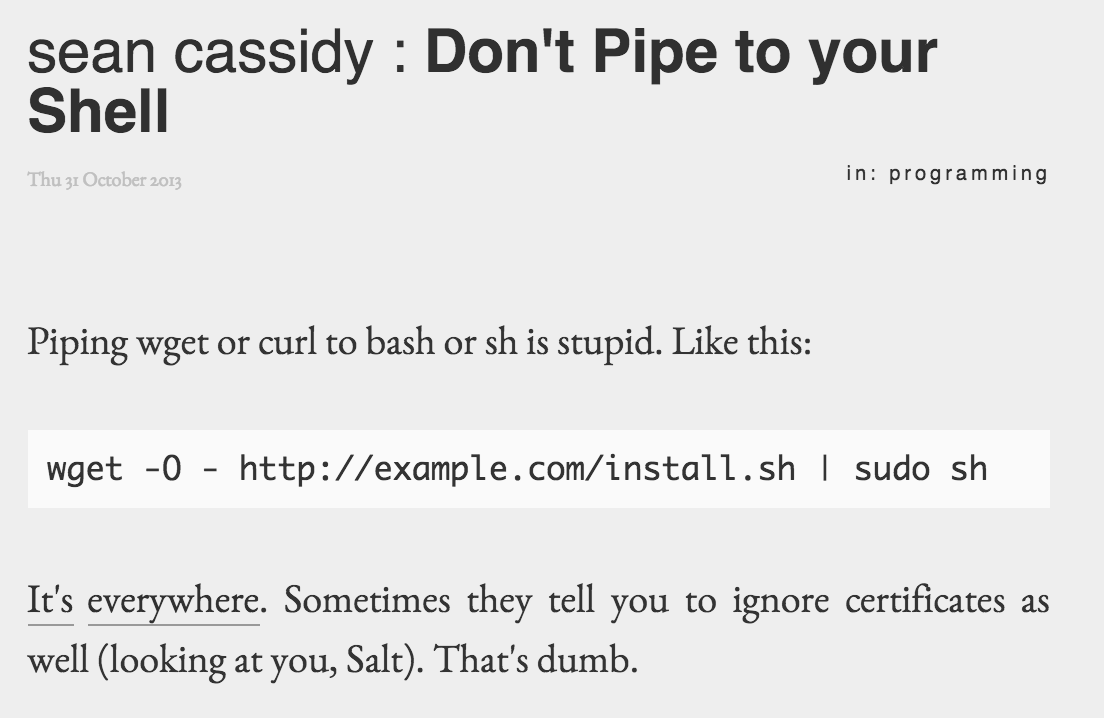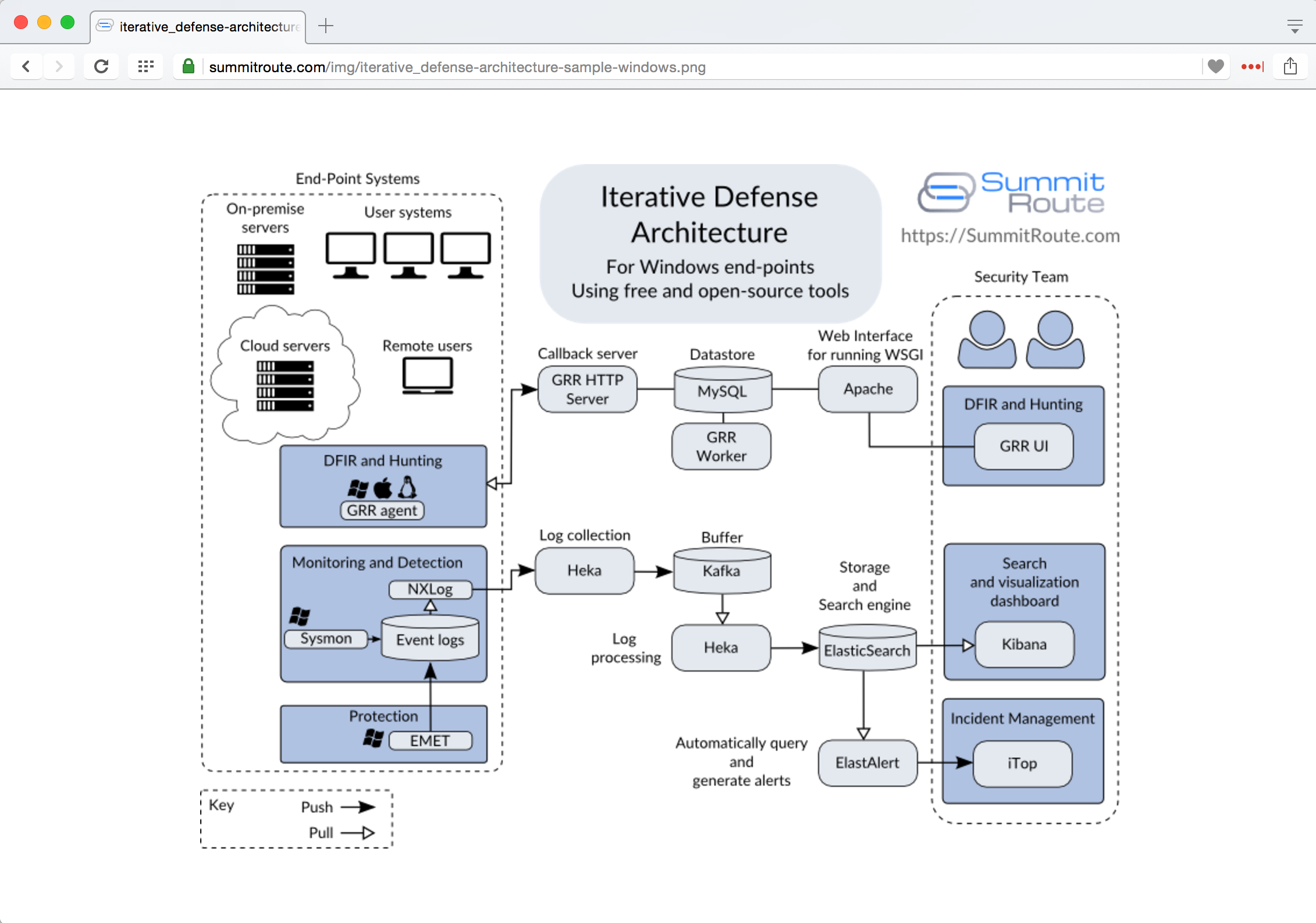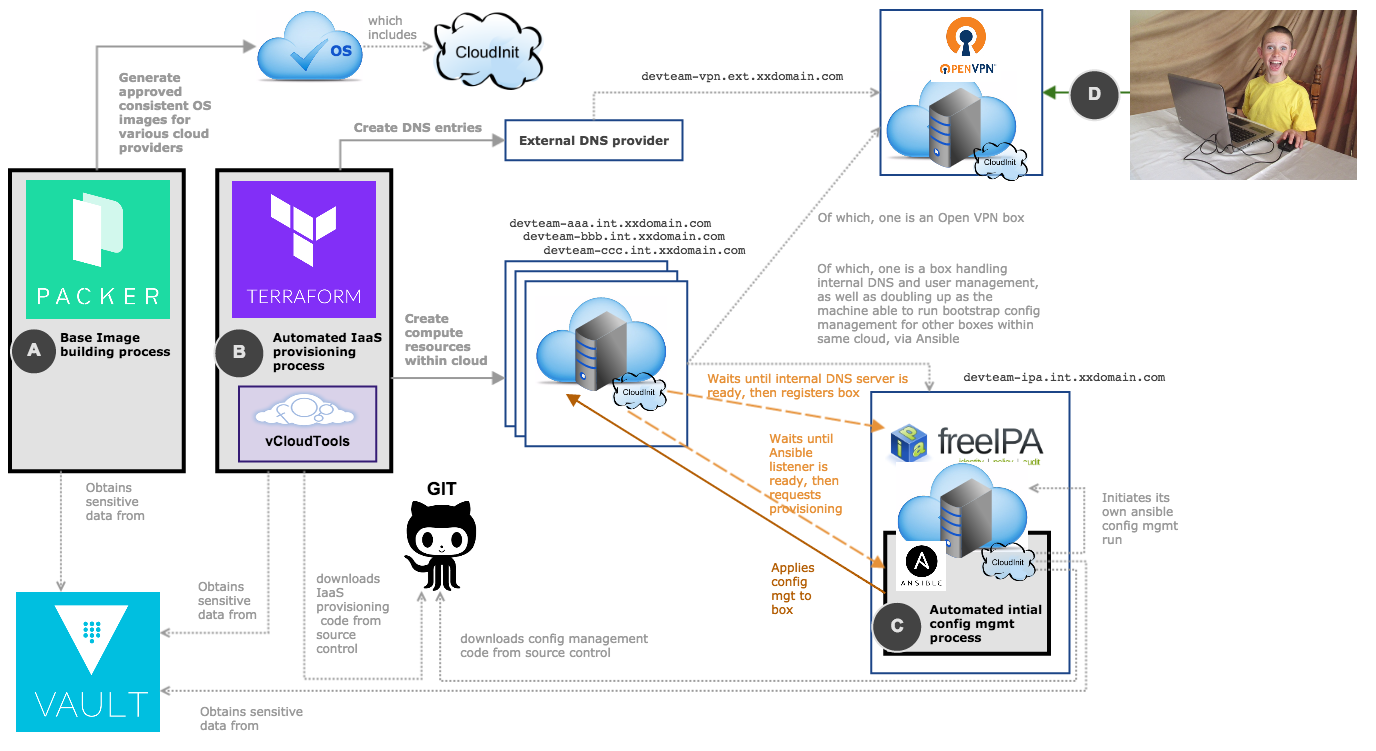2. The Value Proposition¶
As mentioned in Introduction, many of the products and services available in today’s enterprise cybersecurity market have too many zeros in their total price. Nobody likes paying taxes, so local government can’t afford expensive products or managed security services. Volunteers developing open source software don’t want to give up both their time and the contents of their savings accounts.
This section discusses the value proposition for the products of the DIMS project.
2.1. The Need¶
You can’t have good system security without good system administration. Organizations need to have strong system administration skills in order to have a secure foundation for their operations. That 1/3 of attacks due to mistakes and misconfigurations identified in Verizon’s DBIR reflects a painful reality. And 100% of those breaches occurred in companies who employ humans.
Seriously, all humans make mistakes, or miss things. Or they may not know better when trying to just figure out how to get their job done and blindly follow someone’s lead, opening themselves and their organization up to a major security hole (as seen in Fig. 2.1 from Don’t Pipe to your Shell).
Mistakes are easier to make in situations where it is difficult to see what is going on, or where someone is forced to deal with something new that they have never dealt with before and have little expertise. Paul Vixie has described the pain (in terms of operations cost and impact on security posture) that results from complexity in today’s distributed systems and security products. [Vix16]
Increased complexity without corresponding increases in understanding would be a net loss to a buyer. [...]
The TCO of new technology products and services, including security-related products and services, should be fudge-factored by at least 3X to account for the cost of reduced understanding. That extra 2X is a source of new spending: on training, on auditing, on staff growth and retention, on in-house integration.
As knowledge and experience increase, the quality of work output increases and the errors and omissions decrease. Finding and procuring the talent necessary to operate at the highest level, however, is neither easy, fast, nor cheap.
This all begs the question, “What can our organization do bring the capabilities of multiple open source products into a functioning whole with the least amount of pain and best operating security outcome?”
2.2. Our Approach¶
Our approach is to provide a reference model for establishing a secure and maintainable distributed open source platform that enables secure software development and secure system operations. The DIMS team (now implementing the third iteration of some of the core elements) has experienced the pain of this process, which will reduce the cost for those who adopt our methodology.
The DIMS project brings together multiple free/libre open source software (FOSS) tools in a reference model designed to be built securely from the ground up. The two primary outcomes of this effort are:
- An example platform for building a complex integrated open source system for computer security incident response released as open source software and documentation. These products provide a working and documented model platform (or DevOps infrastructure) that can facilitate the secure integration of open source components that (in and of themselves) are often hard to deploy, and often are so insecurely implemented that they are effectively wide open to the internet. This not only solves some of the infrastructure problems alluded to by the Linux Foundation, but also addressing Vixie’s example of supporting organizations wanting to use open source security tools in concert to address their trusted information sharing and security operations needs.
- Transitioning this platform into the public sector to support operational needs of State, Local, Territorial, and Tribal (SLTT) government entities. DIMS project outputs are being evaluated by the PISCES-NW not-for-profit organization for use in the Pacific Northwest (see Section PISCES Northwest). The latest modification to the contract includes a pilot deployment for use by the United States Secret Service for their Electronic Crimes Task Force (ECTF) membership.
The dimssr:dimssystemrequirements documents security practices and features that we have incorporated to the greatest extent possible, in a way that can be improved over time in a modular manner. The system automation and continuous integration/continuous deployment (CI/CD) features help in implementing and maintaining a secure system. (Red team application penetration testing will further improve the security of the system through feedback about weaknesses and deficiencies that crept in during development and deployment.)
Golden nugget
Over two decades of system administration and security operations experience underlies the architectural model that we have been researching, developing, implementing, and documenting. The barrier to entry is the amount of time and learning necessary to acquire this same expertise in order to be competitive.
2.3. Benefits per Cost¶
The value of the DIMS products and methodology comes from altering the cost equation described by Vixie, which can be expressed this way:

The benefit to customers is maximized by the ability to construct and operate a secure incident response monitoring platform, expand it with additional open source tools as needed, saving a large part of the 2x multiplier in implementation cost in system administration and operations overhead cited by Vixie. We enable this by helping make a less complex, more transparent, source controlled, and easier to secure open source platform than may otherwise be produced by someone leveraging multiple unfamiliar open source security tools from scratch. That means standing up a new server and adding new services to it can be reduced from taking hours or days per system to just a few minutes of effort. If that task has to be repeated dozens (or possibly hundreds) of times, the cost savings can be significant.
The DIMS team created and used a CI/CD model using Git, Jenkins CI, and Ansible for taking software source code, system automation instructions, software configuration, and documentation, to build a prototype for an open source software integration project. The resulting product can be used by an internal security operations group (or managed security service provider) to create an open source incident response capability. It also provides many of the elements called for in the CII Badge Program from the GitHub Security and Heroku Security policies.
Note
To see more detail about the full set of tools, techniques, and tasks that DIMS team members were expected to know or learn, see dimsjds:dimsjobdescriptions.
The impact of the effort expended in this project goes beyond implementing one set of open source service components for a single group. This model can be replicated widely and improved upon by others faced with the same set of challenges in developing an affordable and scalable incident response capability.
Note
Over the course of the project, we have learned of several other efforts to address a similar set of goals and have reached out (as time permitted) to find common ground and try to develop collaborative relationships that will have broad impact over time. This is expanded upon in Section Commercialization Plan.
2.4. Competition and Alternatives¶
The common way that organizations go about implementing open source products is by following whatever installation instructions may be provided by the authors. Avoiding the security problems illustrated by Fig. 2.1 involves searching the Internet to (hopefully) find some thread like Alternatives to piping the install script into your shell. #90 (from GitHub fisherman/fisherman, a “plugin manager for Fish,” and no, we haven’t heard of it before either.)
When it comes to the more difficult task of integrating multiple open source products into a functional distributed system, the research required to debug and solve an seemingly endless series of installation, configuration, and tuning problems.
2.4.1. Open Source Security Toolsets¶
Some of the open source security tools that an incident response team would want to consider implementing are covered in the following subsections.
Each of these systems is composed from several existing open source tools, combined with new open source scaffolding, glue, custom interfaces, and additional missing functionality that is necessary to achieve the resulting distributed system.
At the same time, each of these distributed open source systems relies upon their own chosen base operating system, libraries and languages, subordinate services (e.g., database, email transport agent, message bus, job scheduling, etc.) All too frequently, the choices made by each group are mutually exclusive, or left to the customer to work out on their own.
Note
To underscore Vixie’s complexity and cost of implementation
observation, Ubuntu 14.04 and Debian 7 have differences in how common
services are configured that require debugging and custom
configuration steps that vary between distributions, while the use of
systemd for managing service daemons in Ubuntu 16.04 and Debian 8
are major impediments to migrating installation of all required
components of these multi-service systems from Ubuntu 14.04 and
Debian 7. Adding in RedHat Enterprise Linux, CentOS, or Fedora
(all part of the same RedHat family) adds further complexity to
the equation, which is a major reason why containerization is
gaining popularity as a mechanism for isolating these dependency
differences in a more manageable (but arguably less secure)
fashion.
2.4.1.1. The Trident portal¶
The Trident portal is written in Go. Only Debian 7 (wheezy) is supported at this time, though Ubuntu 14.04 is on the list of future operating systems. Trident relies on PostreSQL for database, NGINX for web front end, and Postfix for email transport.
2.4.1.2. The Collective Intelligence Framework (CIF)¶
The Collective Intelligence Framework (CIF) is the primary offering from the CSIRT Gadgets Foundation. CIF is only supported on Ubuntu Linux. It is written in Perl and uses PostgreSQL, Apache2, BIND, Elasticsearch, ZeroMQ, and can support Kibana as an alternative interface to the indexed data in Elasticsearch.
A monolithic EasyButton installation script is available in the PlatformUbuntu section of the CIF wiki to automate the installation steps.
2.4.1.3. The Mozilla Defense Platform (MozDef)¶
The Mozilla Defense Platform (MozDef) was developed by Mozilla to replace a commercial SIEM product with open source alternatives. They report processing over 300 Million records per day with their internal deployment.
MozDef uses Ubuntu 14.04 as the base operating system. It has components for front-end user interface written in Javascript using Meteor, Node.js, and d3, and back-end data processing scripts written in Python using uWSGI, bottle.py, with MongoDB for a database, RabbitMQ for message bus, and NGINX for web app front end.
For installation, there is a demonstration Dockerfile for creating a
monolithic Docker image with all of the MozDef components in it. (This is
not the way Docker containers are intended to implement scalable microservices,
but it does provide a very easy way to see a demonstration instance of MozDef).
The manual instructions are more elaborate and must be followed carefully
(including considering the admonitions related to security, e.g., “Configure
your security group to open the ports you need. Keep in mind that it’s probably
a bad idea to have a public facing elasticsearch.”)
2.4.1.4. GRR Rapid Response¶
Another example of a system made up of multiple components, packaged together into a single easy-to-install package, is the GRR Rapid Response system, a “forensic framework focused on scalability enabling powerful analysis.”
GRR runs on Ubuntu 16.04. To ease installation of the server components,
the GRR team, like CIF and MozDef, provide both a monolithic installation
script for a VM installation and a Dockerfile to run in a container.
They also have packages for installing the client components on Windows,
OS X, and Linux.
Attention
The GRR team chose to move to systemd, rather than continue to support
the older upstart, init.d, or supervisord service daemon
systems that are used by other products described in this section. This
means you must support three (or four) different service daemon management
mechanisms in order to incorporate all of the tools described here
into a single integrated deployment.
GRR’s documentation similarly includes admonitions about security and functionality that is left to the customer to implement. Take Fig. 2.2, a question from their FAQ as an example:
2.4.2. Integrated Open Source Solutions¶
The DIMS project began in Q4 2013. In the second half of 2015 two very similar efforts were identified that use some of the same tools for the same reasons. Both validate the model being established by DIMS and the value proposition for adopters.
2.4.2.1. Summit Route Iterative Defense Architecture¶
An organization named Summit Route has described what they call the Iterative Defense Architecture (see Fig. 2.3) that is very similar in form and content to what the DIMS project has focused on producing.
2.4.2.2. OpenCredo¶
A consultancy in the United Kingdom named OpenCredo is also working on a similar architecture to the DIMS project (see Fig. 2.4). Some of the specific components differ, but conceptually are the same and would meet the same requirements for the foundation (minus the dashboard, portal, etc.) that is specified in dimssr:dimssystemrequirements.
| [Vix16] | Paul Vixie. Magical Thinking in Internet Security. https://www.farsightsecurity.com/Blog/20160428-vixie-magicalthinking/, April 2016. |



